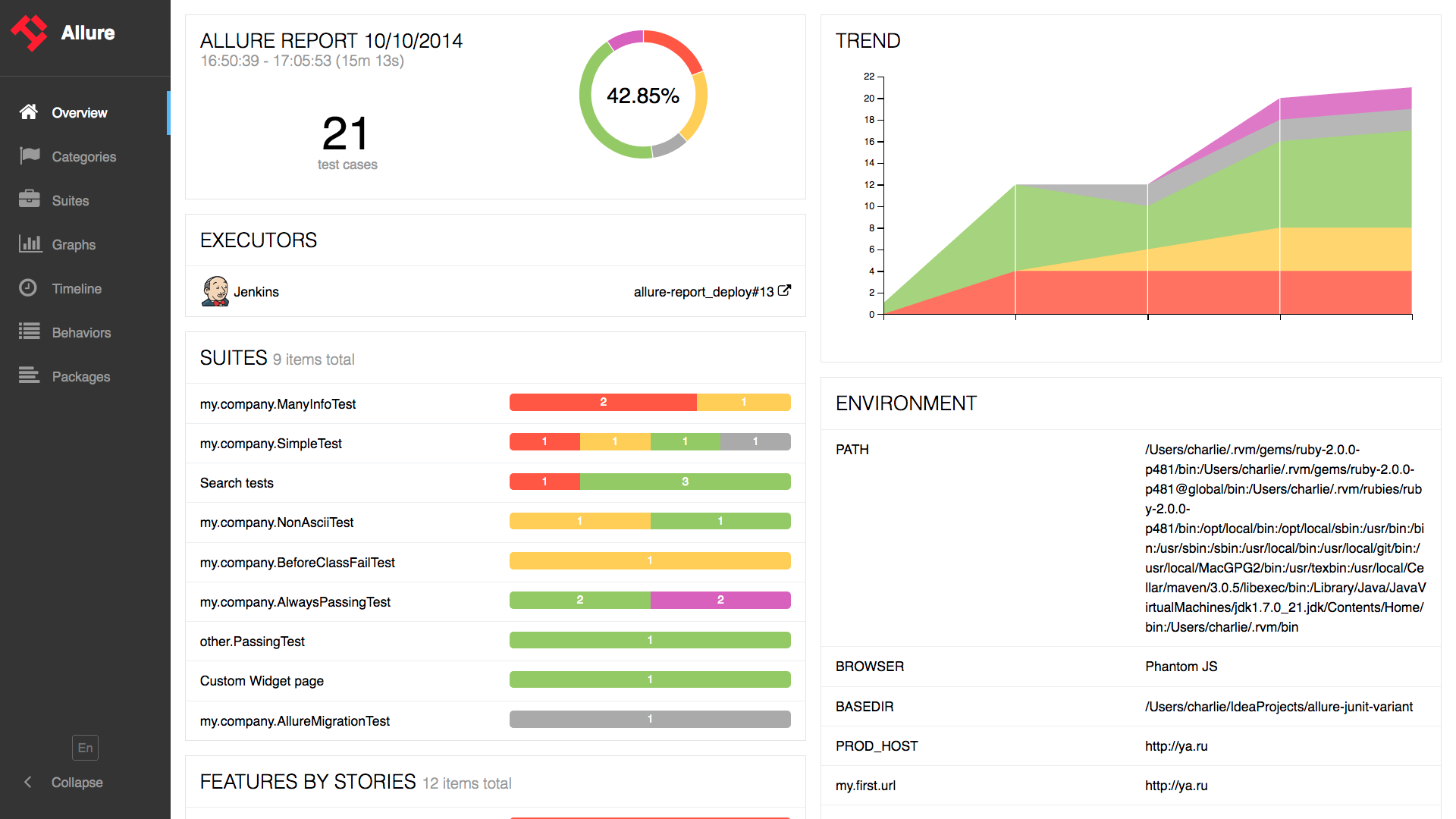Allure Reporter
A WebdriverIO reporter plugin to create Allure Test Reports.

Installation#
The easiest way is to keep @wdio/allure-reporter as a devDependency in your package.json.
You can simple do it by:
Configuration#
Configure the output directory in your wdio.conf.js file:
outputDirdefaults to./allure-results. After a test run is complete, you will find that this directory has been populated with an.xmlfile for each spec, plus a number of.txtand.pngfiles and other attachments.disableWebdriverStepsReporting- optional parameter(falseby default), in order to log only custom steps to the reporter.issueLinkTemplate- optional parameter, in order to specify the issue link pattern. Reporter will replace{}placeholder with value specified inaddIssue(value)call parameter. Examplehttps://example.org/issue/{}tmsLinkTemplate- optional parameter, in order to specify the tms link pattern. Reporter will replace{}placeholder with value specified inaddTestId(value)call parameter. Examplehttps://example.org/tms/{}disableWebdriverScreenshotsReporting- optional parameter(falseby default), in order to not attach screenshots to the reporter.useCucumberStepReporter- optional parameter (falseby default), set it to true in order to change the report hierarchy when using cucumber. Try it for yourself and see how it looks.disableMochaHooks- optional parameter (falseby default), set it to true in order to not fetch thebefore/afterstacktrace/screenshot/result hooks into the Allure Reporter.
Supported Allure API#
addLabel(name, value)- assign a custom label to testaddFeature(featureName)– assign feature to testaddStory(storyName)– assign user story to testaddSeverity(value)– assign severity to testaddIssue(value)– assign issue id to testaddTestId(value)– assign TMS test id to testaddEnvironment(name, value)– save environment valueaddAttachment(name, content, [type])– save attachment to test.name(String) - attachment name.content– attachment content.type(String, optional) – attachment MIME-type,text/plainby default
addArgument(name, value)- add additional argument to testaddDescription(description, [type])– add description to test.description(String) - description of the test.type(String, optional) – description type,textby default. Values ['text', 'html','markdown']
addStep(title, [{content, name = 'attachment'}], [status])- add step to test.title(String) - name of the step.content(String, optional) - step attachmentname(String, optional) - step attachment name,attachmentby default.status(String, optional) - step status,passedby default. Must be "failed", "passed" or "broken"
startStep(title)- start with a steptitle(String) - name of the step.
endStep(status)- end with a stepstatus(String, optional) - step status,passedby default. Must be "failed", "passed" or "broken"
Usage#
Allure Api can be accessed using:
ES5
ES6
Mocha example
Displaying the report#
The results can be consumed by any of the reporting tools offered by Allure. For example:
Command-line#
Install the Allure command-line tool, and process the results directory:
This will generate a report (by default in ./allure-report), and open it in your browser.
Autogenerate Report#
You can also autogenerate the report by using the Allure command line tool programatically. To do so install the package in your project by:
Then add or extend your onComplete hook or create a custom service for this:
Jenkins#
Install and configure the Allure Jenkins plugin
Add Screenshots#
Screenshots can be attached to the report by using the takeScreenshot function from WebDriverIO in afterStep hook.
First set disableWebdriverScreenshotsReporting: false in reporter options, then add in afterStep hook
As shown in the example above, when this function is called, a screenshot image will be attached to the allure report.